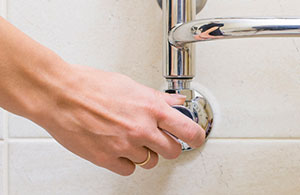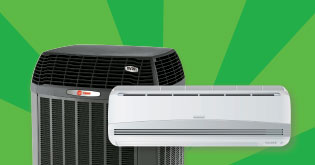- My Account:
- Sign In
- Register
- Make Payment
Sales 877.359.2151
Service 973.366.3100
Sales 877.359.2151
Service 973.366.3100

Warning signs to help you know when it's time to call a plumber.
 You may
not be able to prevent a pipe from breaking, causing damage that could lead to thousands of dollars in cleanup and repairs, but it pays to be aware of and learn more about the following signs and symptoms that could lead to future plumbing problems:
You may
not be able to prevent a pipe from breaking, causing damage that could lead to thousands of dollars in cleanup and repairs, but it pays to be aware of and learn more about the following signs and symptoms that could lead to future plumbing problems:
- Make sure you know all about your main shut-off valve
By knowing how to shut your water off fast, you can prevent major home damage in case of an emergency and potentially thousands of dollars. Make sure everyone in your home knows where your shut-off valve is, and how to control it. If you don't have one, consider having one installed today.

- Ongoing leaks, drips or reduced water flow
Persistent drips from faucets or fixtures can indicate that it's time to replace them. If they don't provide the usual pressure or force, it may be a clogged aerator. Has your shower's water pressure weakened? If so, the shower head could be clogged and coated with film. You can replace a washer, or remove and clean the aerator or filter yourself but like with most plumbing issues, it's smart to have a professional plumber handle them to prevent any unforeseen or future issues.
- Outdoor hose bibs or spigots that rattle
Defective hose bibs, or pipes that rattle and wiggle could cause leaks inside the walls of your home, which is a serious problem. Whether you have one or many outdoor hose spigots, all modern installations feature controls that eliminate seasonal draining or winter "wrapping" requirements. However, it is still imperative that you disconnect all hoses before freezing temperatures. During spring and summer garden watering seasons, regularly check for drips and loose fittings and have them repaired if required. If you notice any of these signs, it may be time to call your plumber.

- Age and maintenance of pipes and tubing
Depending on when your home was built, water lines may be copper or plastic. Water pipes may be cast iron, galvanized steel or PVC. While these materials are built to last, fittings can become defective, pipes can deteriorate, and various outside influences can cause problems. Minor nicks caused by a nail or something as simple as crimping an icemaker line accidentally can lead to major leaks when you least expect it, cause a pipe to burst months or years later or lead to a slow leak with just as much potential for damage over time. - Deposit build-up and staining
Types of water and water quality are different depending on the trace minerals and additives in the area where you live. These factors can lead to staining or a white, green or brown powder or crusty build-up on fixtures and faucets which can be a sign that similar build-up is affecting water flow in the pipes of your home. If you see any indication of this, or if metal faucets become pitted, it's time to have a plumbing professional check the plumbing systems in your home that you cannot see. You can help prevent this issue by installing either a whole-house purification system, or some "point of use" filters.

Learning more about these signs and symptoms may help you prevent a plumbing emergency but most important of all is to find a reliable local plumber before you need one and always have their number somewhere that you can reach it fast.




.jpg?sfvrsn=43a0195a_3)